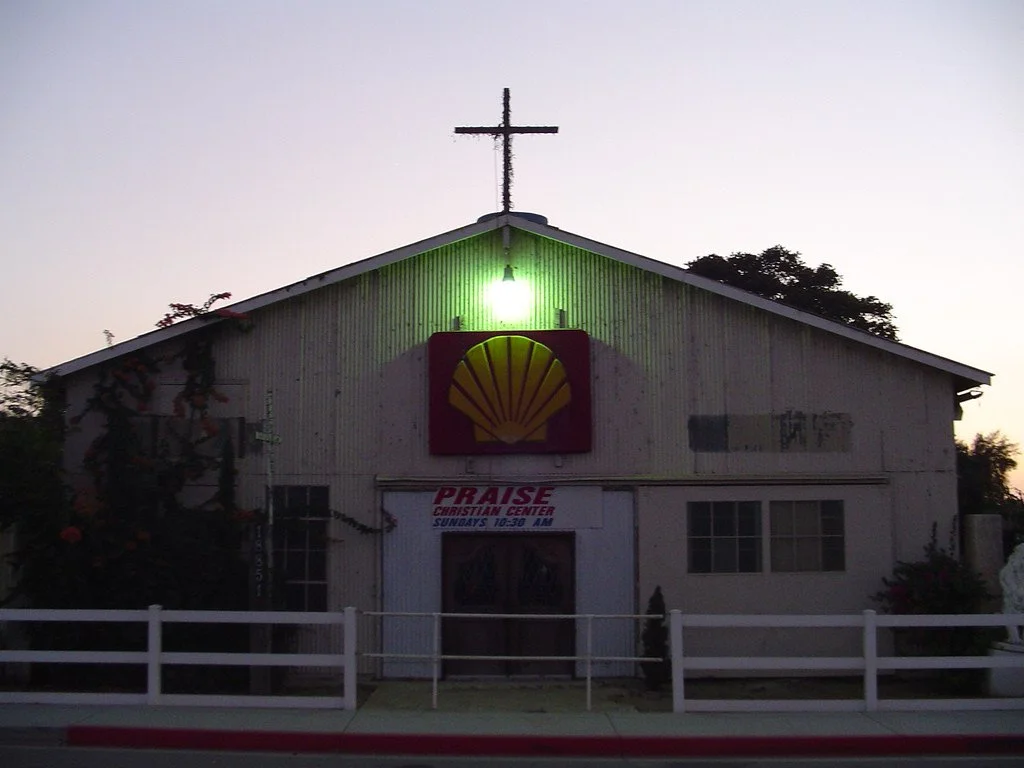There’s more going on at some of these holy places than religious services. Secret World reveals unusual architecture, striking design features, and more at churches around the world. Here our 10 Most Extraordinary Churches of the World
1. The Church of Hallgrímur (Reykjavík, Iceland)
The Church of Hallgrímur is a Lutheran parish church which is also a very tall one, reaching 74.5 meters (244 ft) in height. It is the fourth tallest architectural structure in Iceland and one of its most famous monuments.
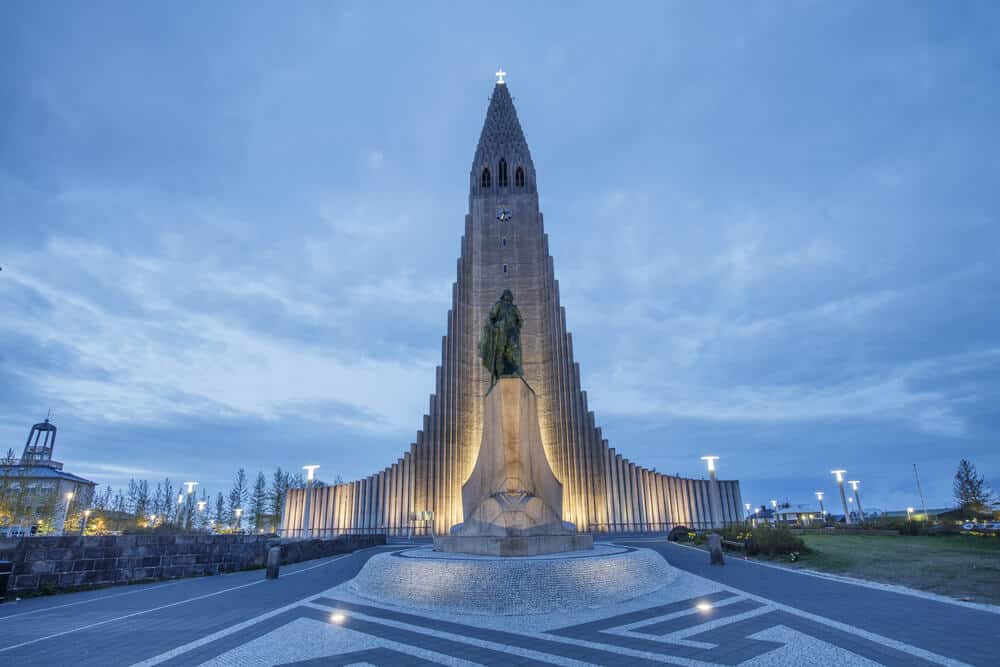
It took incredibly long to build it (38 years!) Construction work began on this Icelandic church in 1945 and ended in 1986.
2. Device to Root Out Evil (Calgary, AB, Canada)
If you happen to find yourself wandering on 5th Street Square in East Village, don’t be alarmed if you see a fascinating structure installed in the park.It is a contraption by the late American artist and sculptor Dennis Oppenheim, known for his eclectic and sometimes outrageous artistic creations.
The public art installation, “Device to Root Out Evil,” sits right in 5th Street Square and had previously called Calgary’s Ramsay neighbourhood its home from 2008 until 2014, as well as Venice and Vancouver before that.
“Device to Root out Evil” is an upside-down, New England-style church built so that its steeple is pointed into the ground.
The 7.5m tall sculpture is made from galvanized steel, perforated metal and Venetian glass.
Initially called, “Church,” the installation was created by Oppenheim who proposed funding from the New York City’s Public Art Fund so that it could be located on Church Street, where he lived at the time.
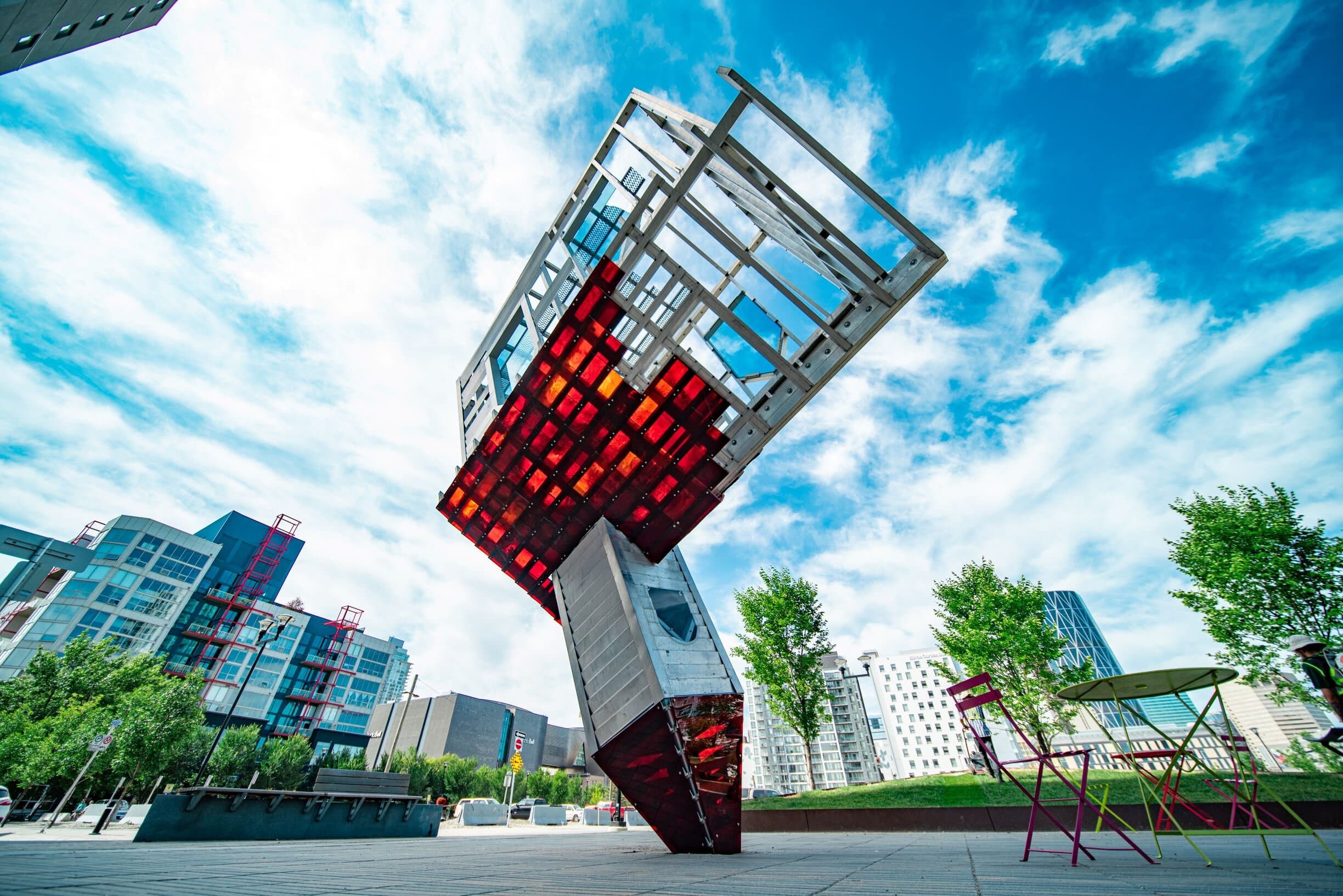
Ultimately, the art was considered so controversial that it was renamed before being installed as part of the 1997 Venice Biennale, instead.
In fact, Stanford University, despite approving the purchase of the piece in 2003, subsequently vetoed its purchase after the university’s president called it, “inappropriate for campus.”Since then it has made its way to Vancouver, Calgary, and even Mallorca, before finally settling down in East Village today.
3. Shell Church (Huntington Beach)
Huntington Beach, city, Orange county, southwestern California, U.S. Situated south of Los Angeles, it lies along the Pacific Coast Highway. Originally the territory of Gabrielino(Tongva) Indians, the city was formed from parts of Rancho Las Bolsas and Rancho Los Alamitos. It was first called Shell Beach and after its subdivision (1901) was known as Pacific City. To encourage its promotion as a seaside resort, it was renamed Huntington Beach for the railroad magnate Henry E. Huntington. The discovery of oil (1920) beneath the town site spurred the residential growth of the city and provided a basis for the city’s industrial development; after 1930 offshore tideland oil production began, but the oil industry has since undergone a substantial decline. Tourism, service industries, and technology assumed an increasing role in the city’s changing economy. Major economic assets include Boeing’s space centre and a large steam generating plant. Huntington Pier (originally built in 1914) is a popular tourist attraction. The city has been known for decades as Surf City, and Huntington State Beach is still a favourite venue for surfing.
4. St Joseph Ukrainian Catholic Church (Chicago, IL, USA)
I don’t want to tell what kind of thing those domes remind me of. Its massiveness and gray color make it look like Soviet brutalist architecture. I was amazed when I read that it was actually in the USA and not in the Soviet Union.
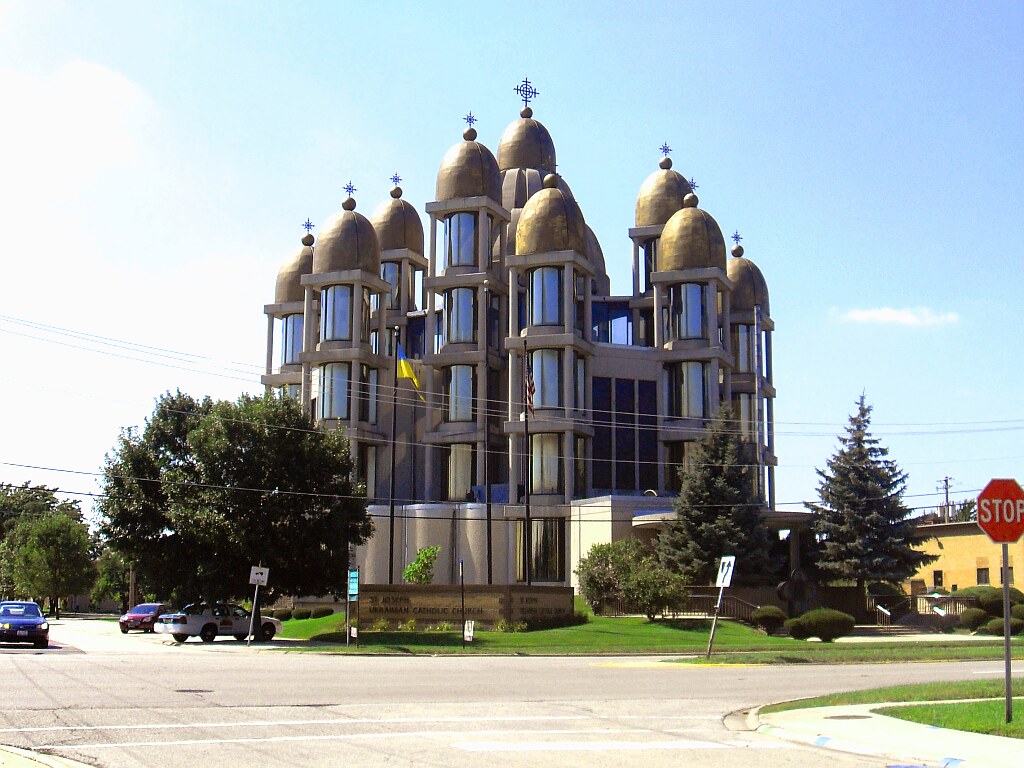
St. Joseph Ukrainian Catholic church is best known for its ultra-modern style and thirteen gold domes on its roof. It symbolizes the twelve apostles with Jesus Christ as the largest center dome.
It is celebrating its 53rd anniversary this year, so it was built in 1956 (if my calculations are right)
5. Jubilee Church (Rome, Italy)
Jubilee Church has very distinctive curved walls which look like sails and serve the engineering purpose of minimizing thermal peak loads in the interior space.
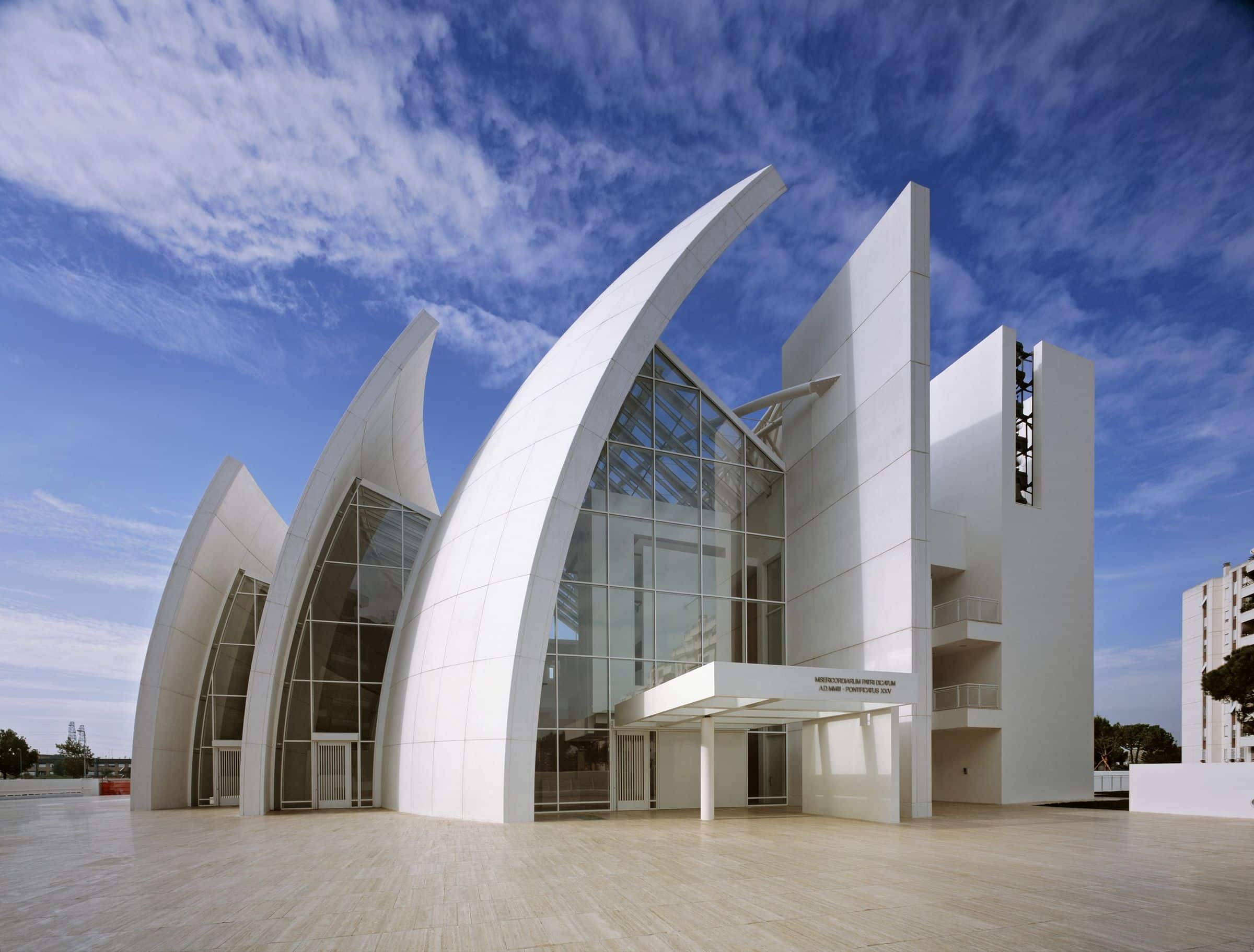
The walls are made from a special cement which contains titanium dioxide, so it destroys air pollution.
According to Borgarello: “When the titanium dioxide absorbs ultraviolet light, it becomes powerfully reactive, breaking down pollutants that come in contact with the concrete.
6. Church in Stykkishólmskirkja (Iceland)
Icelandic architect Jón Haraldsson designed this place of worship on a westerly peninsula. Its most prominent feature is a dramatic bell tower, made from two swooping concrete fins modelled on a whale vertebrae.
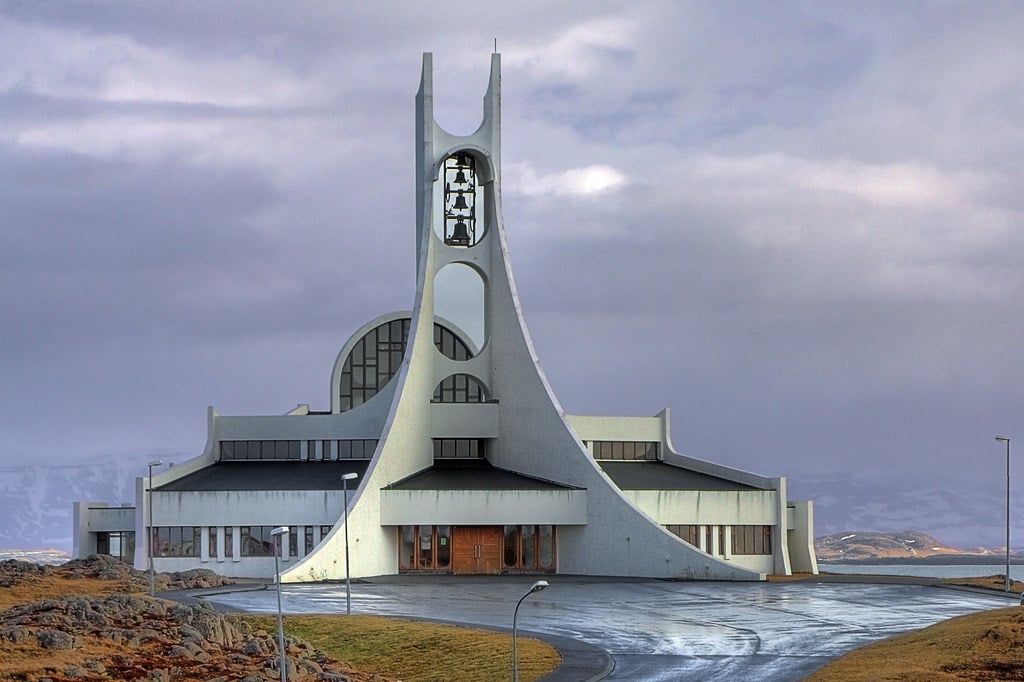
The white Stykkishólmskirkja also features a domed apse, while the interior boasts hundreds of suspended lights, as well as an alter piece by Icelandic painter Kristín Gunnlaugsdóttir of Madonna and Christ.
7. Paoay Church a.k.a St. Augustine Parish (Philippines)
Paoay Church in the Philippines reminds me of Aztec architecture — it looks very massive and strong. The walls of the church are 1.67 meters thick and are supported by 24 carved buttresses.
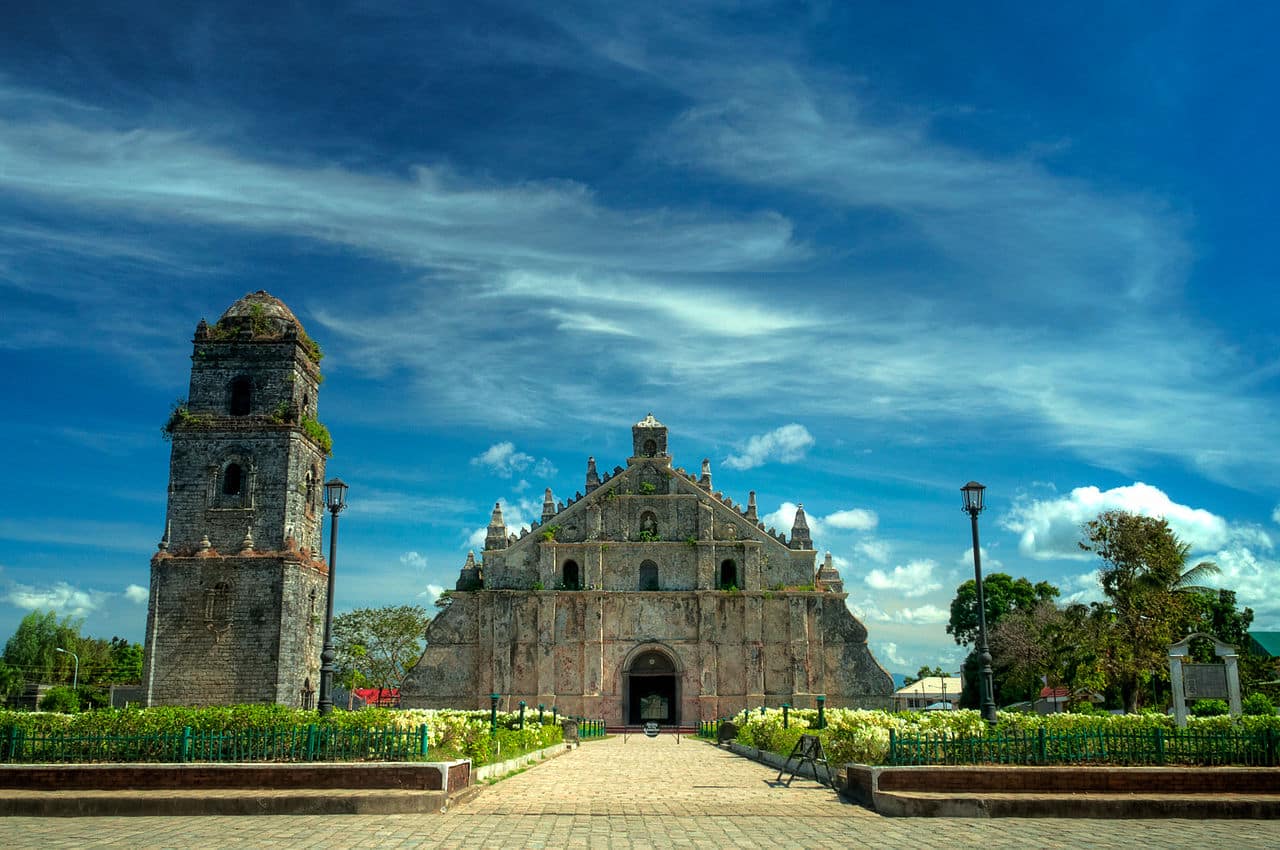
Its construction started in 1704 and was completed in 1894 by the Augustinian friars led by Fr. Antonio Estavillo. It is said that its construction primarily was intended to withstand earthquakes. And it could test the strength of the walls very soon because the church was damaged by an earthquake in 1706 and 1927.
The design of the church is a mixture of Gothic, Oriental, and Baroque influences
8. Church in a Hill (Luxembourg)
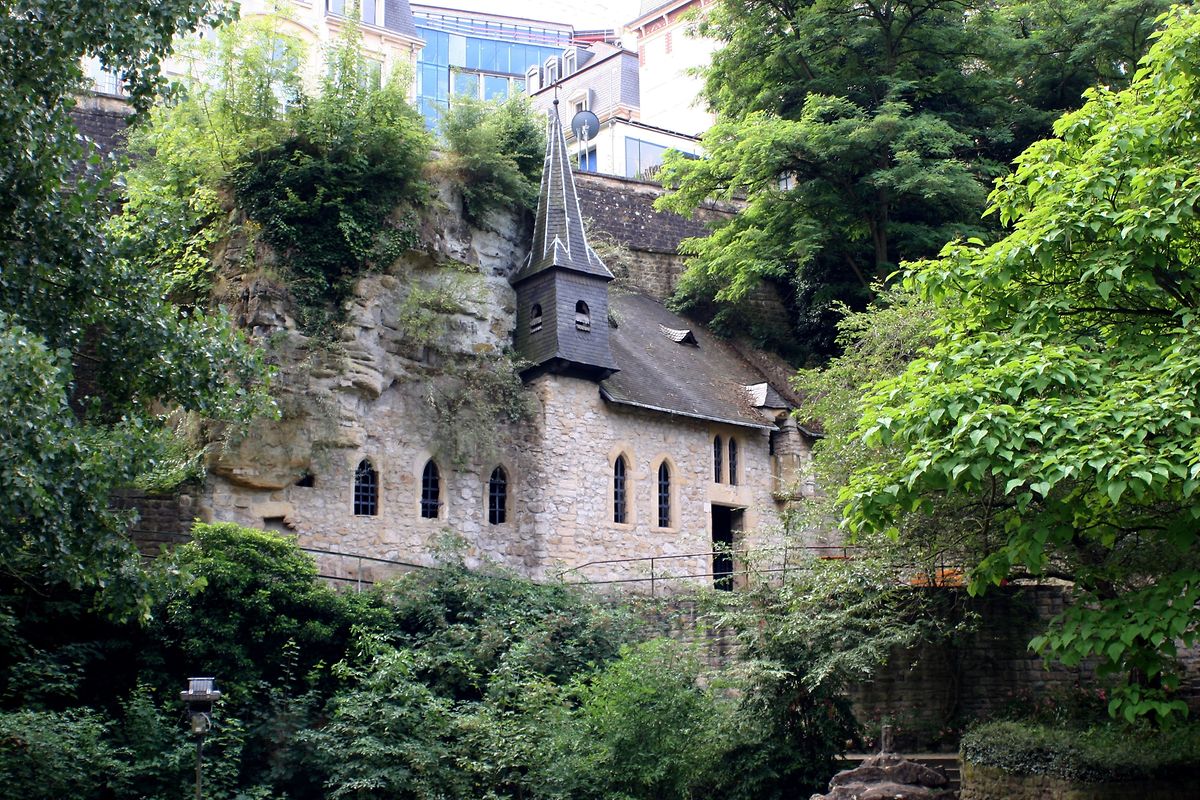
Another example of a church built into rock, this one blends also into the hillside. One of the reasons the Grand Duchy of Luxembourg has survived as an independent state for a thousand years against such powerful neighbors as Germany and France is because the area is eminently fortifiable
9. Grundtvig’s Church, (Copenhagen, Denmark)
Grundtvig’s Church was erected in commemoration of the great Danish priest, poet, and reformer N.F.S. Grundtvig (1783 – 1882). This monumental church is referred to in modern terms as a gothic cathedral.
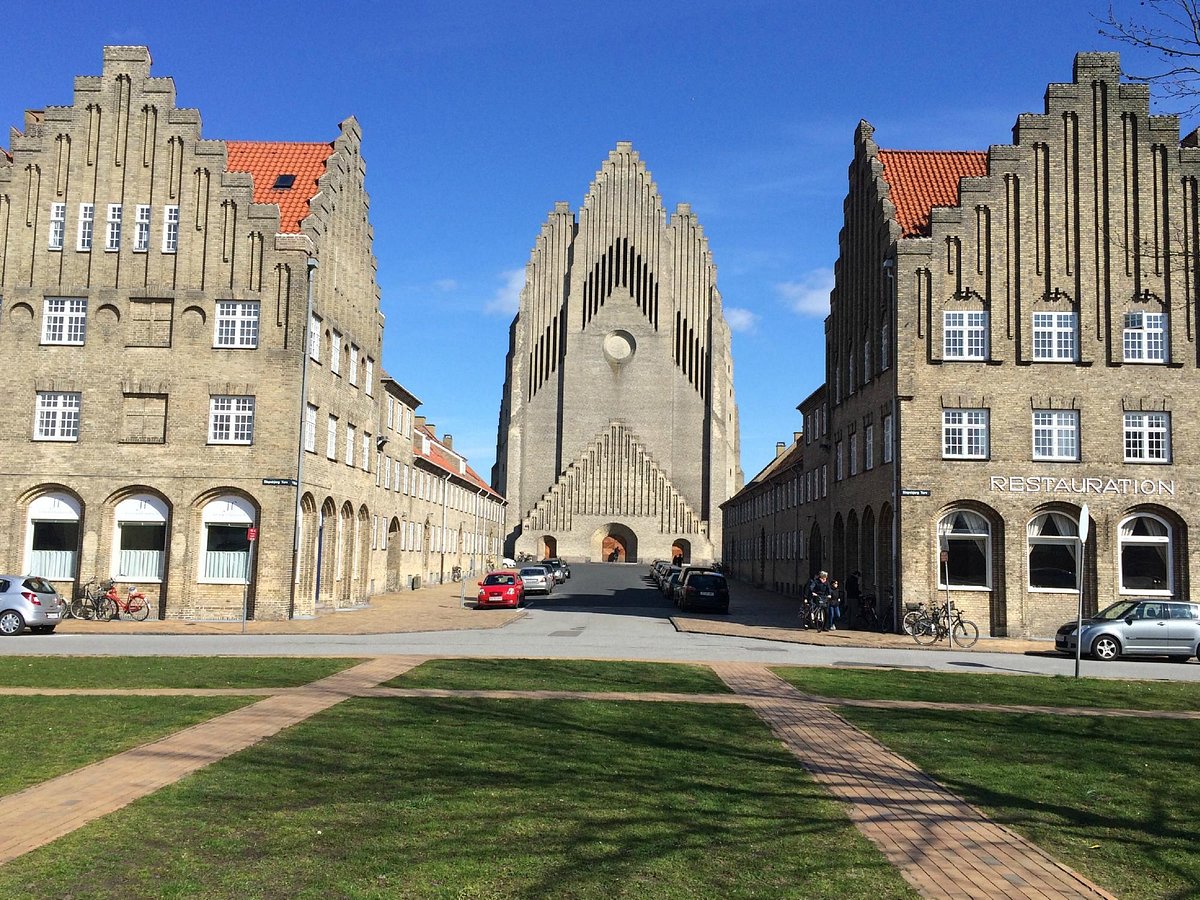
Master builder and architect Peder Vilhelm Jensen Klint (1853 – 1930) died before the church was finished. The task was entrusted to his son architect and designer Kaare Klint (1888-1954), who completed the building of the church in 1940. Kaare Klint has also designed the chairs for the Grundtvig’s Church – a chair made of beech wood with a wickerwork seat – a Danish furniture design classic. Despite its massive size, the church seems to exude an atmosphere of calm contentment. Perhaps it is the appeal of the regular yellow brickwork forming the sole decoration of the church.
10. The Felsenkirche a.k.a. Church of the Rock, (Idar-Oberstein, Germany).
The Felsenkirche (“Church of the Rock”), a church built into a natural niche in the rocks, rises high above the houses of Oberstein. It blends nicely into the mountain making all this place magical.
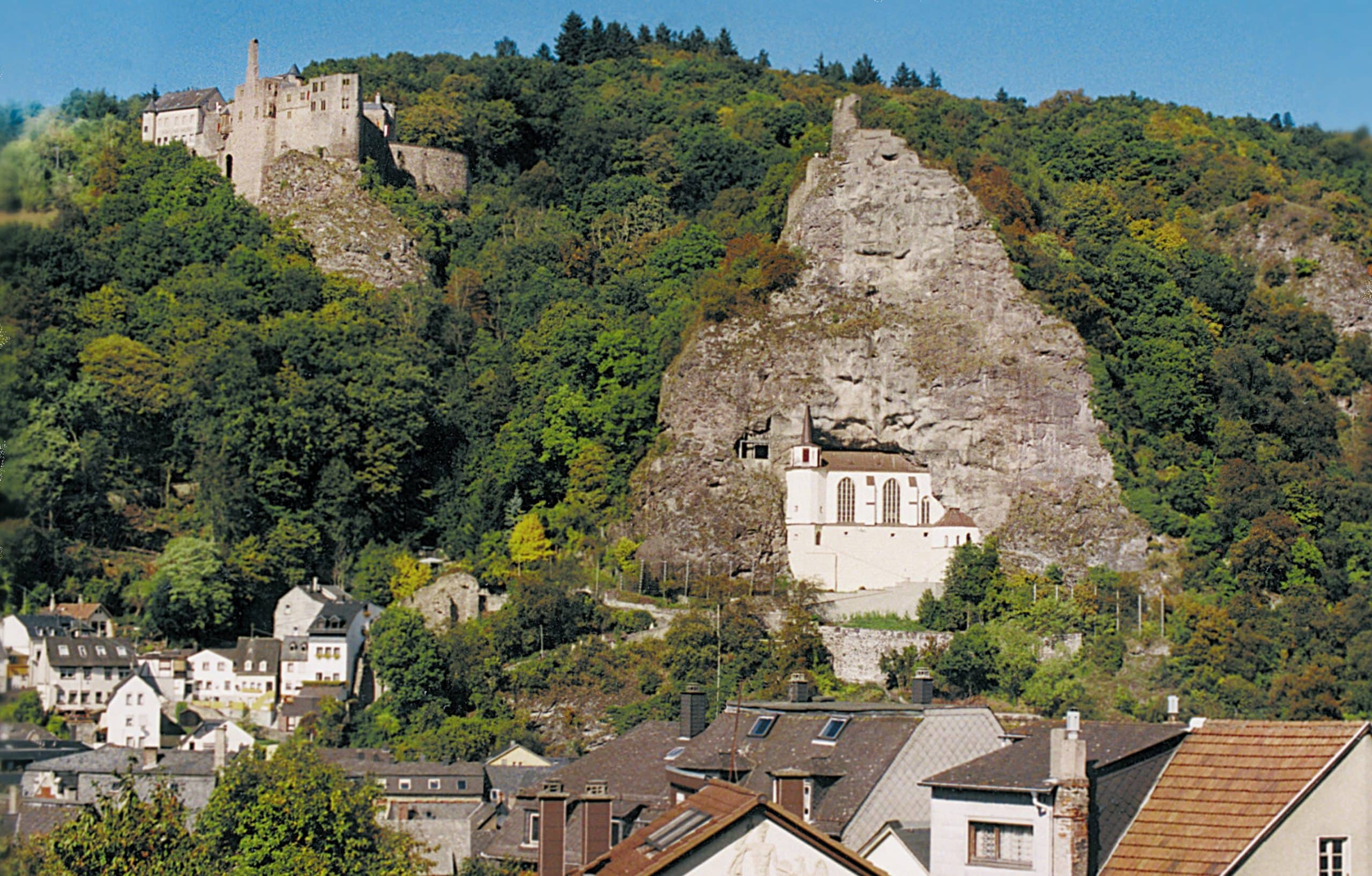
According to legend. this unique cliffhanging chapel, known as the Felsenkirche (also called “Chapel-in-the-Rocks” and “Crag Church”), was built to atone for the murder of a prince by his jealous brother.
Supposedly, Wyrich and Emich, two brothers who lived in the castle atop of the cliff, were both in love with a beautiful woman named Bertha, each unaware of the other’s affections for her. When Wyrich was away, Emich married the object of the their affection. Upon the jilted brother’s return, he launched his successful rival from a castle window in a fit of rage. In penitence for his crime, Wyrich singlehandedly excavated the Felsenkirche’s cavern on the spot where his dead brother’s body had been found, 165 feet below the castle.
